As The Element That Makes Up 75 Percent Of All The Mass In The Universe, And More Than 90 Percent Of

As the element that makes up 75 percent of all the mass in the Universe, and more than 90 percent of all the atoms, we’re all pretty well acquainted with hydrogen.
But the simplest and most abundant element in the Universe still has some tricks up its sleeve, because physicists have just created a never-before-seen form of hydrogen - negatively charged hydrogen clusters.
To understand what negatively charged hydrogen clusters are, you first have to wrap your head around their far more common counterparts - positively charged hydrogen clusters.
Positively charged hydrogen clusters are pretty much exactly what they sound like - positively charged clusters of a few or many hydrogen molecules.
Known simply as hydrogen ion clusters, they form at very low temperatures, and can contain as many as 100 individual atoms.
Physicists confirmed the existence of hydrogen ion clusters some 40 years ago, and while a negative counterpart to these clusters boasting large numbers of atoms were theorised, no one could figure out how to create one.
But that didn’t stop a team of physicists led by Michael Renzler from the University of Innsbruck in Austria from giving it a shot.
Continue Reading.
More Posts from Contradictiontonature and Others
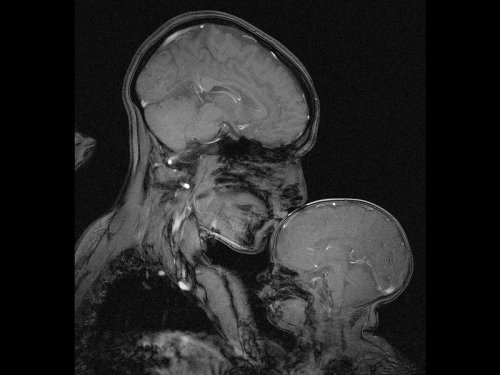
Neuroscientist captures an MRI of a mother and child
Professor Rebecca Saxe (MIT) has taken the first ever MR image of a mother and child.
“This picture is an MR image of a mother and a child that I made in my lab at MIT. You might see it as sweet and touching… an image of universal love. We can’t see clothes or hairstyles or even skin colour. From what we do see, the biology and the brains, this could be any mother and child or even father and child at any time and place in history; having an experience that any human can recognise.
Or you might see it as disturbing, a reminder that our human bodies are much too fragile as houses for ourselves. MRI’s are usually medical images and often bad news. Each white spot in that picture is a blood vessel that could clog, each tiny fold of those brains could harbour a tumour. The baby’s brain maybe looks particularly vulnerable pressed against the soft thin shell of its skull.
I see those things, universal emotions and frightening fragility but I also see one of the most amazing transformations in biology.”
Quotes have been taken from a TEDx talk given by Professor Saxe explaining the story behind the above picture.

January is #NationalBloodDonorMonth 💉 Which different blood types are compatible with one another? This graphic takes a look: https://ift.tt/35wB7S9 https://ift.tt/2ugvtXs

New insights into the molecular basis of memory
Scientists from the German Center for Neurodegenerative Diseases (DZNE) in Göttingen and Munich have shed new light on the molecular basis of memory. Their study confirms that the formation of memories is accompanied by an altered activity of specific genes. In addition, they found an unprecedented amount of evidence that supports the hypothesis that chemical labels on the backbone of the DNA (so-called DNA methylation) may be the molecular basis of long-term memory. These findings are reported in “Nature Neuroscience”.
The brain still harbours many unknowns. Basically, it is assumed that it stores experiences by altering the connections between brain cells. This ability to adapt – which is also called “plasticity” – provides the basis for memory and learning, which is the ability to draw conclusions from memories. On a molecular scale these changes are mediated by modifications of expression of specific genes that as required strengthen or weaken the connections between the brain cells.
In the current study, a research team led by Dr. Stefan Bonn and Prof. André Fischer from Göttingen, joined forces with colleagues from the DZNE’s Munich site, to examine how the activity of such genes is regulated. The scientists stimulated long-term memory in mice, by training the animals to recognise a specific test environment. Based on tissue samples, the researchers were able to discern to what extent this learning task triggered changes in the activity of the genes in the mice’s brain cells. Their focus was directed on so-called epigenetic modifications. These modifications involve the DNA and DNA associated proteins.
Epigenetic modifications
“The cell makes use of various mechanisms in order to turn genes on or off, without altering the DNA sequence itself. It’s called ‘epigenetics’,” explains Dr. Magali Hennion, a staff member of the research group of Stefan Bonn.
In principle, gene regulation can happen through methylation, whereby the backbone of the DNA is chemically labeled at specific sites. Changes in the proteins called histones that are packaging the DNA may also occur.
Hennion: “Research on epigenetic changes that are related to memory processes is still at an early stage. We look at such features, not only for the purpose of a better understanding of how memory works. We also look for potential targets for drugs that may counteract memory decline. Ultimately, our research is about therapies against Alzheimer’s and similar brain diseases.“
A code for memory contents?
In the current study the researchers found modifications, both of the histones as well as of the methylation of the DNA. However, histone modifications had little effect on the activity of genes involved in neuroplasticity. Furthermore, Bonn and his colleagues not only discovered epigenetic modifications in nerve cells, but also in non-neuronal cells of the brain.
“The relevance of non-neuronal cells for memory, is an interesting topic that we will continue to pursue“, says André Fischer, site speaker for the DZNE in Göttingen and professor at the University Medical Center Göttingen (UMG). “Furthermore, our observations suggest that neuroplasticity is to a large extent regulated by DNA methylation. Although this is not a new hypothesis, our study provides an unprecedented amount of supporting evidence for this. Thus, methylation may indeed be an important molecular constituent of long-term memory. In such a case, methylation could be a sort of code for memory content and a potential target for therapies against Alzheimer’s disease. This is an aspect that we specifically want to focus on, in further studies.”

Got a chemistry-themed watch for Christmas - good for checking the time periodically 😃
Sounds, such as music and noise, are capable of reliably affecting individuals’ moods and emotions, possibly by regulating brain dopamine, a neurotransmitter strongly involved in emotional behavior and mood regulation.


Even after someone is declared dead, life continues in the body, suggests a surprising new study with important implications.
Gene expression — when information stored in DNA is converted into instructions for making proteinsor other molecules — actually increases in some cases after death, according to the new paper, which tracked postmortem activity and is published in the journal Open Biology.
“Not all cells are ‘dead’ when an organism dies,” senior author Peter Noble of the University of Washington and Alabama State University told Seeker. “Different cell types have different life spans, generation times and resilience to extreme stress.”
In fact, some cells seem to fight to live after the organism has died.
“It is likely that some cells remain alive and are attempting to repair themselves, specifically stem cells,” Noble said.

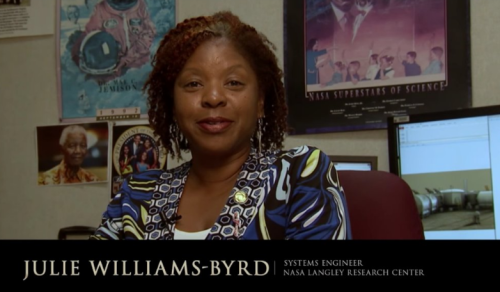
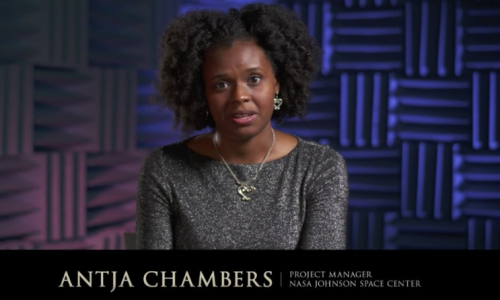
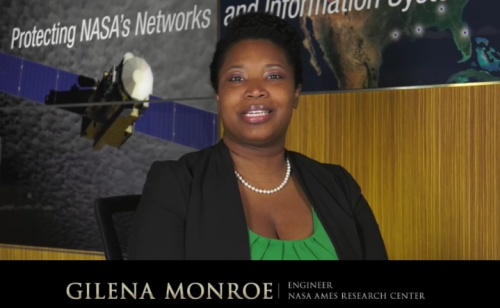
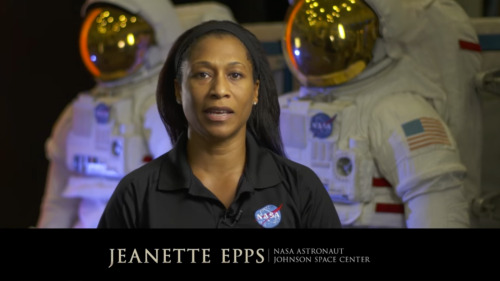
The film “Hidden Figures,” based on the book by Margot Lee Shetterly, focuses on the stories of Katherine Johnson (left, after receiving the Medal of Freedom in 2015), Mary Jackson and Dorothy Vaughan, African-American women who were essential to the success of early spaceflight. Today, NASA embraces their legacy and strives to include everyone who wants to participate in its ongoing exploration. “Progress is driven by questioning our assumptions and cultural assumptions,” NASA Administrator Charles Bolden says in a new video. “Embracing diversity and inclusion is how we as a nation will take the next giant leap in exploration.“
- Source
Let’s learn about today’s black heroes we all can look up to!
Phenyllithium or lithobenzene is an organometallic agent with the empirical formula C6H5Li. Crystalline phenyllithium is colorless; however, solutions of phenyllithium are various shades of brown or red depending on the solvent. It is a highly air and moisture sensitive compound, that could be easily decomposed by any protic solvent.

In this case it was a byproduct of a synthesis of an organophosphorous compound and it was only present in a LOW concentration, therefore it was safe to decompose it by simply adding cold water. It’s important to note that it could be dangerous to decompose organometallic compounds by simply adding water. Also, in this case, the highly toxic BENZENE was the product of this reaction, what should be handled with care.




Separation of a highly fluorescent anthranilic acid derivative from the reaction mixture.
The upper organic layer dissolved almost completely my compound from the reaction mixture and could be separated in one step. A good point was that the compound had a really strong fluorescence and if I placed an UV lamp next to the separation funnel it was easily observed that the water phase contained almost none of the title compound.

Astronomers Discover an Entirely New Kind of Galaxy
Astronomers at the University of Minnesota Duluth and the North Carolina Museum of Natural Sciences have identified a new class of ring galaxy. Named PGC 1000714, it features an elliptical core with not one, but two outer rings. It’s the only known galaxy of its kind in the known universe.
-
 mullercells liked this · 8 years ago
mullercells liked this · 8 years ago -
 zachary-tudor liked this · 8 years ago
zachary-tudor liked this · 8 years ago -
 this-nmr-is-unreadable reblogged this · 8 years ago
this-nmr-is-unreadable reblogged this · 8 years ago -
 surrenderssnottheoption liked this · 8 years ago
surrenderssnottheoption liked this · 8 years ago -
 wertloseroxat liked this · 8 years ago
wertloseroxat liked this · 8 years ago -
 sci-fi-wi-fi reblogged this · 8 years ago
sci-fi-wi-fi reblogged this · 8 years ago -
 jjuliia liked this · 8 years ago
jjuliia liked this · 8 years ago -
 suckmygypsie reblogged this · 8 years ago
suckmygypsie reblogged this · 8 years ago -
 beckernyms reblogged this · 8 years ago
beckernyms reblogged this · 8 years ago -
 robbierotten1717-blog liked this · 8 years ago
robbierotten1717-blog liked this · 8 years ago -
 giorgioluciano reblogged this · 8 years ago
giorgioluciano reblogged this · 8 years ago -
 giorgioluciano liked this · 8 years ago
giorgioluciano liked this · 8 years ago -
 thoths-foundry-blog reblogged this · 8 years ago
thoths-foundry-blog reblogged this · 8 years ago -
 kgoeswoof liked this · 8 years ago
kgoeswoof liked this · 8 years ago -
 tailsthefoxy reblogged this · 8 years ago
tailsthefoxy reblogged this · 8 years ago -
 tailsthefoxy liked this · 8 years ago
tailsthefoxy liked this · 8 years ago -
 silent-noise liked this · 8 years ago
silent-noise liked this · 8 years ago -
 silent-noise reblogged this · 8 years ago
silent-noise reblogged this · 8 years ago -
 howtotrainyournana liked this · 8 years ago
howtotrainyournana liked this · 8 years ago -
 wickedpool reblogged this · 8 years ago
wickedpool reblogged this · 8 years ago -
 wickedpool liked this · 8 years ago
wickedpool liked this · 8 years ago -
 sunmooneclipsewitch reblogged this · 8 years ago
sunmooneclipsewitch reblogged this · 8 years ago -
 crystals-and-catalysis-blog liked this · 8 years ago
crystals-and-catalysis-blog liked this · 8 years ago -
 ludmila199 liked this · 8 years ago
ludmila199 liked this · 8 years ago -
 ghostofhallownest reblogged this · 8 years ago
ghostofhallownest reblogged this · 8 years ago -
 regularlyfe liked this · 8 years ago
regularlyfe liked this · 8 years ago -
 crossroadsdimension reblogged this · 8 years ago
crossroadsdimension reblogged this · 8 years ago -
 dreamseersystem reblogged this · 8 years ago
dreamseersystem reblogged this · 8 years ago -
 dreamseersystem liked this · 8 years ago
dreamseersystem liked this · 8 years ago -
 tumbleweed-chaser liked this · 8 years ago
tumbleweed-chaser liked this · 8 years ago -
 megrimwolds liked this · 8 years ago
megrimwolds liked this · 8 years ago -
 sciencenerd4-blog liked this · 8 years ago
sciencenerd4-blog liked this · 8 years ago -
 silverblue94 liked this · 8 years ago
silverblue94 liked this · 8 years ago -
 stervio liked this · 8 years ago
stervio liked this · 8 years ago -
 fulinelite reblogged this · 8 years ago
fulinelite reblogged this · 8 years ago -
 goldilocksuniverse liked this · 8 years ago
goldilocksuniverse liked this · 8 years ago -
 belgaer liked this · 8 years ago
belgaer liked this · 8 years ago -
 justsomerandomletters liked this · 8 years ago
justsomerandomletters liked this · 8 years ago -
 aura218 reblogged this · 8 years ago
aura218 reblogged this · 8 years ago -
 ilyadushin-blog liked this · 8 years ago
ilyadushin-blog liked this · 8 years ago
A pharmacist and a little science sideblog. "Knowledge belongs to humanity, and is the torch which illuminates the world." - Louis Pasteur
215 posts